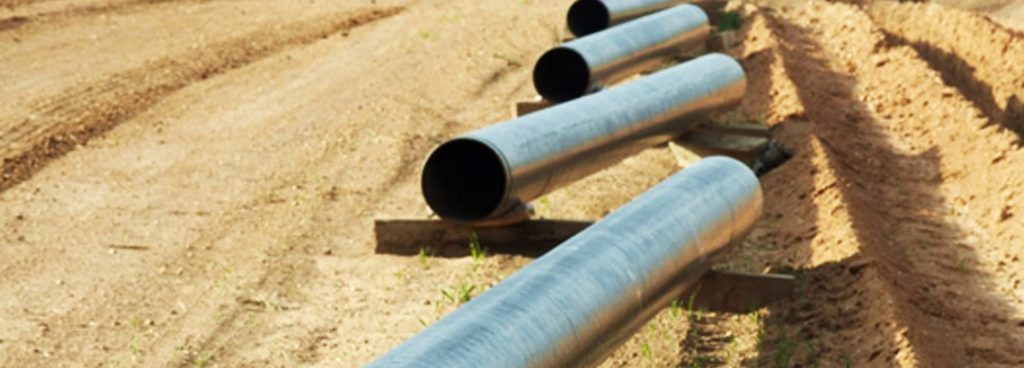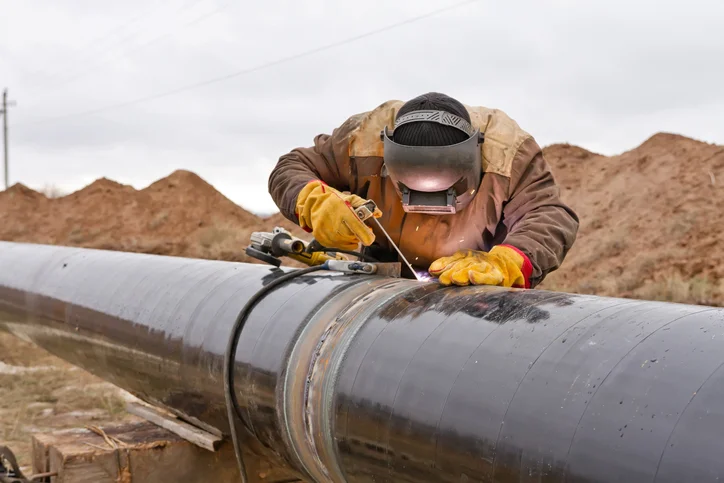Pipeline Welding Inspection: Making Sure Conformity with Market Requirements
Pipeline Welding Inspection: Making Sure Conformity with Market Requirements
Blog Article

Ideal Practices for Pipeline Welding Assessment: Techniques, Specifications, and Treatments to Accomplish Quality Control and Conformity
Effective pipeline welding examination is necessary for making certain the integrity and safety of critical infrastructure. By utilizing a combination of strategies such as visual inspection and advanced non-destructive testing approaches, in addition to adherence to developed industry standards like those from ASME and AWS, companies can substantially boost their quality assurance procedures. However, the implementation of these finest methods positions various challenges that warrant careful factor to consider. Understanding the intricacies associated with each stage of assessment is crucial to achieving conformity and integrity in pipeline systems. What details methods can be used to browse these obstacles properly?
Relevance of Welding Evaluation
The honesty of welded joints is extremely important in guaranteeing the safety and security and dependability of pipe systems. Correct welding methods and comprehensive inspection processes are essential to stop failures that can bring about catastrophic incidents, environmental damages, and death. Pipeline Welding Inspection. Welding examination works as a safety net, determining flaws such as fractures, porosity, and incomplete combination before they rise into significant issues
Furthermore, pipeline systems usually run under high stress and extreme conditions, making the quality of welds much more vital. Governing conformity is one more substantial facet, as different requirements determine the quality control processes that have to be stuck to in pipeline construction and upkeep. Failing to conform can result in lawful implications and financial losses.

The duty of welding assessment extends past plain verification of handiwork; it incorporates the guarantee of long-term functional stability. This involves a methodical approach that includes not just aesthetic assessments yet likewise progressed non-destructive testing techniques. Inevitably, effective welding evaluation is an investment in the durability and safety and security of pipeline systems, guaranteeing they function as meant while reducing dangers related to material deficiencies.
Trick Inspection Techniques

Aesthetic inspection, typically the initial line of protection, permits the recognition of surface area defects such as fractures, undercuts, and porosity. Ultrasonic testing employs high-frequency acoustic waves to spot interior imperfections, providing a detailed analysis of weld integrity. This non-destructive method is specifically reliable for recognizing discontinuities that might not show up externally.
Radiographic testing entails making use of X-rays or gamma rays to generate pictures of the welded joint, disclosing interior defects. This method provides in-depth insights yet might need specific devices and security considerations. Last but not least, magnetic bit screening is efficient for finding surface and near-surface interruptions in ferromagnetic products, utilizing magnetic areas and fine iron particles.
Market Standards and Laws
Compliance with industry requirements and laws is important for guaranteeing the high quality and safety of pipeline welding inspections. These requirements supply a framework for ideal techniques in welding procedures, products, and examination methods, permitting companies to lessen issues and enhance the integrity of pipeline systems. Trick bodies such as the American Culture of Mechanical Engineers (ASME), the American Welding Culture (AWS), and the International Organization for Standardization (ISO) collection forth guidelines that are extensively acknowledged and adopted within the industry.
In the USA, policies from the Pipeline and Hazardous Materials Safety And Security Management (PHMSA) govern the safety of pipe operations, mandating extensive evaluation procedures. These criteria not just offer to secure public safety and the environment but also guarantee compliance with legal and lawful responsibilities. Adherence to the relevant codes, such as ASME B31.3 for procedure piping, is necessary for maintaining functional efficiency and regulatory conformity.
In addition, continual updates and alterations to these criteria show technological advancements and evolving market practices, stressing the need for organizations to stay enlightened and train personnel as necessary. Ultimately, robust conformity with well-known standards fosters trust and integrity in pipe infrastructure, safeguarding both stakeholders and assets.
Efficient Assessment Procedures
Efficient examination procedures are essential for determining prospective defects in pipe welds and ensuring the general stability of the system. A methodical approach to assessment includes a number of crucial stages, consisting of pre-weld, in-process, and post-weld evaluations. Each phase plays an important duty in keeping quality control.
During pre-weld evaluation, it is vital to review the materials and joint configurations, ensuring compliance with project specs. In-process examinations involve keeping an eye on welding methods and visit this site specifications, such as warm input and take a trip rate, to stop problems from happening. This phase enables real-time changes to welding methods.
Post-weld inspections consist of non-destructive testing (NDT) methods like radiography, ultrasonic testing, and magnetic bit testing. These methods assist find inner and surface imperfections that could endanger the pipeline's performance. Documents of all inspection tasks is critical, supplying a traceable record go to these guys that supports conformity with market requirements.
Educating and accreditation of assessment workers better enhance the effectiveness of these procedures. By sticking to a structured examination protocol, companies can minimize threats, guarantee conformity, and eventually provide pipes that meet rigorous safety and efficiency demands.
Typical Obstacles and Solutions
Pipeline welding examination provides a number of usual challenges that can impact the top quality and safety and security of the final item. One substantial difficulty is the irregularity in welding strategies and materials, which can bring about inconsistent weld top quality. To address this, it is essential to establish standard treatments and training for welders, making sure an uniform strategy throughout jobs.

Ecological aspects, consisting of temperature level and humidity, can additionally affect the welding process, possibly bring about cracks or incomplete combination. Implementing controlled atmospheres and sticking to pre-weld procedures can alleviate these risks.
Final Thought
Finally, the execution of ideal techniques for pipe welding evaluation is vital for making certain quality guarantee and conformity with market standards. An extensive method, including numerous techniques such as aesthetic, from this source ultrasonic, and radiographic testing, assists in the identification of problems throughout all phases of the welding procedure. Pipeline Welding Inspection. Adherence to established guidelines and reliable assessment procedures not only boosts the integrity and security of pipeline systems yet also minimizes risks connected with welding flaws, thereby promoting overall functional stability
Compliance with market criteria and guidelines is vital for ensuring the top quality and safety of pipeline welding inspections. These standards provide a structure for finest methods in welding processes, products, and examination methods, allowing organizations to lessen flaws and enhance the honesty of pipeline systems.In the United States, laws from the Pipeline and Hazardous Materials Safety And Security Management (PHMSA) govern the safety and security of pipeline procedures, mandating rigorous evaluation protocols. An organized technique to examination incorporates several key stages, including pre-weld, in-process, and post-weld assessments.In final thought, the implementation of best techniques for pipe welding evaluation is crucial for making sure high quality assurance and conformity with sector requirements.
Report this page